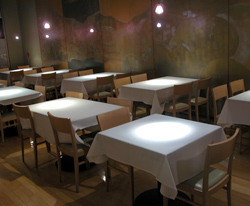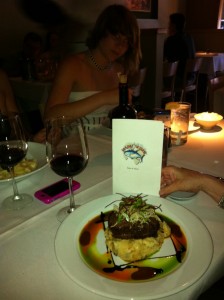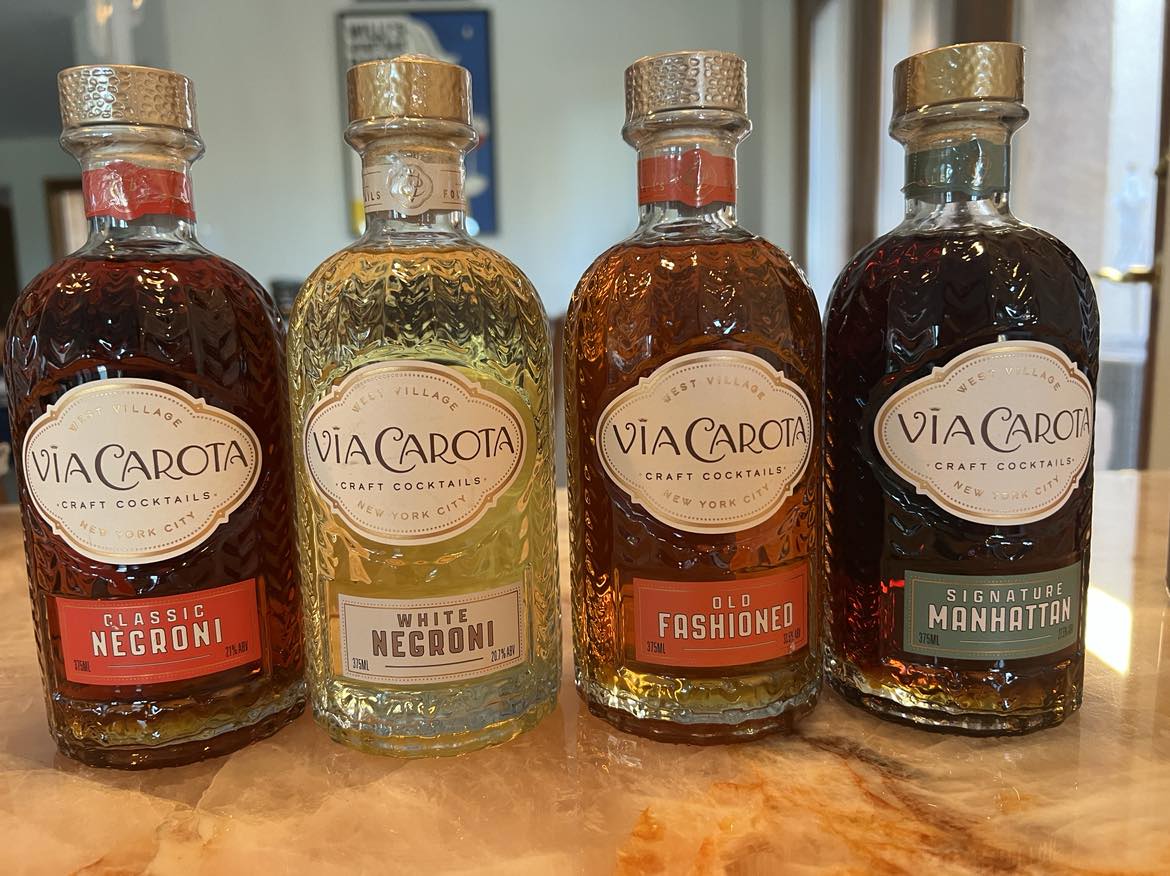Maru’s last day is 12/12. Info about what happened can be found on their Facebook page. (https://www.facebook.com/MaruRestaurant?ref=ts&fref=ts) I’m re-posting two stories, 11-28-12 and 12-5-12, that I’ve done on their wonderful food and service. Jason Park said that if you want to get in before they shutter for good, make reservations: 661-290-2595.
Today readers get to virtually enjoy gastronomic delights from Japan to France from Maru Sushi’s Jason Park:
 EB: Jason, the menus on Valentines Day were over-the-top gastronomic delights! One appeared to be Japanese, the other, French? How did you design the menus and recipes?
EB: Jason, the menus on Valentines Day were over-the-top gastronomic delights! One appeared to be Japanese, the other, French? How did you design the menus and recipes?
JP: Japanese and French are very similar in that they have a lot of detailed work and a lot of energy is devoted to presentation and of course flavor. My training is French from culinary school while I was also in undergrad at UCLA and I also studied Japanese cuisine including sushi at the California Sushi Academy. I learned under Andy Matsuda who opened Sushi Chef Institute and I spent additional time under the owner of the CSA Toshi Sugiura. From childhood to my young adult years, I spent a lot of time helping both my mother cook and father around the house. With my grandmother having graduated college in Japan, the food she raised my mother on was a mix of Japanese and Korean.
I have been doing a simplified version of a Kaiseki menu along with a California cuisine menu on Valentine’s Day for the past 9 years. Tastings are what I love to eat and my passion can be seen and tasted through them. There is a progression of flavors I like to take people through and one course is designed to follow the previous. If you were to swap a course for another one, it just will not be the same. Every component is thought out and designed to compliment the other flavors, textures, aromas, etc on the plate.
The menus are designed by some sort of inspiration. It can be something that I see at the farmers’ market or sometimes random ideas just pop in my head and I try to translate that onto the plate.
EB: Does your daily menu reflect the fresh items you are able to purchase, and then you create the recipes?
JP: Our menu is market driven. If I cannot get the best ingredients, then I will not make it. For instance, squab is not readily found fresh, so I have to tell my meat vendor when I want it so that the producer packs it fresh for me the day before I need it. Vegetables and fruit are the same. Just because it is available does not mean that it makes it onto my menu.
A lot of the time, I just see something that looks amazing so I buy it and think about how I can make something with it as I am driving back to the restaurant. I almost never have an idea which requires certain ingredients that are out of season and stick with it, resorting to tasteless out of season ingredients.
There are also some staple items, such as our filet, lamb, and cooked seafood items whose starches and vegetables may change based on what the farmers have. In either case, if it is not fresh and tasty, then it doesn’t make it on the menu since I pretty much print the menu daily. Look for the date at the bottom of it.
EB: How is it that you can provide so many different culinary choices?
JP: Valencia is a very unique environment when it comes to dining. Maru relates best to those who are used to dining out on the Westside and moved up here because they wanted a house after getting married and having a baby. There are also those who have lived in the outskirts of LA all their lives and are meat and potatoes people. Then there are the strictly organic fanatics, and so on and so on. Anyway, we focus our attention to those who know quality and to foodies who travel to eat.
People who love sushi have access to not just the best fish and sushi chefs in town but we also make the best steak in town. Many other places claim to be the best, but no one is as fresh, and no one carries the fish from Japan like we do, nor is any other sushi chef more skilled than are part of the Maru team. If I am not picking a fight or challenging all the other restaurants out there, I don’t know what this is. Bring it on!
As far as what I put on the menu is concerned, I make what I love to eat. I don’t care much for chicken, except for fried chicken, and I hate sushi rolls. So if you notice, I don’t have much of those on the menu. What I do love is all sorts of proteins from eggs to lamb and vegetables. Most of my plates have some sort of vegetable component, not just for flavor, but also for health.
What you eat is what you are made out of, so health has a lot to do with diet. A good diet gives a person great amounts of energy and poor one leaves a person in a fog. Things like cancer, diabetes, hypertension, etc all have something to do with one’s diet. Want to be thinner and more fit? Change what you eat. Did you know I consume at least 4,000 calories a day with some days where I consume 6,000? It’s what you eat and how you eat it that makes one full of energy and not fat. And no, I don’t work out everyday and I don’t run an hour a day. I just run for about 30 minutes once a week and I try to lift weights twice a week, but I can go for weeks without doing any of it and I still don’t gain fat.
 EB: Some of the fare I had on Valentines Day included a Seared Diver’s Scallop with a squash tortellini and beet nage (romantic bright red colors!), Lamb confit with creme fraiche and a ginger-syrah sauce (my kid stole mine but I love your sauces!), Chashu men braised pork with ramen (the kid refused to share), Lobster and Tomato salad (how did you get such sweet tomatoes – another veggie my kids snagged off my plate!)…and then the Guava cheesecake lollipops? What were you thinking? I mean, are these recipes in your noggin or do you just come up with whatever you have the best ingredients for, taste test and improvise?
EB: Some of the fare I had on Valentines Day included a Seared Diver’s Scallop with a squash tortellini and beet nage (romantic bright red colors!), Lamb confit with creme fraiche and a ginger-syrah sauce (my kid stole mine but I love your sauces!), Chashu men braised pork with ramen (the kid refused to share), Lobster and Tomato salad (how did you get such sweet tomatoes – another veggie my kids snagged off my plate!)…and then the Guava cheesecake lollipops? What were you thinking? I mean, are these recipes in your noggin or do you just come up with whatever you have the best ingredients for, taste test and improvise?
JP: At this point, most everything just comes out of my head. I can visually see how much of a certain ingredient I need before I even start cooking and I can taste it. It’s just a matter of how close I get to what is in my brain when I start throwing everything together. I almost never get it without having to do some minor adjustment, but sometimes I get very very close and I don’t have to do much adjustment. There have been times, when I had to scrap something entirely and start over with a substitution, but not this Valentine’s Day.
Desserts are an exception. They are conceptual in my mind, but when it comes to execution, I have to go back through my recipes and adjust them. For instance, mixing fresh guava into my cheesecake recipe resulted in 2 batches that were for staff only. The third time was a charm and so we made a bigger batch based on that.
EB: I don’t really have any more questions. But, the last one made me remember how attentive your staff was to detail. They were so solicitous of our every need. And, not to mention, they queried us on what we thought of each course. I knew that they “were in on it” and you had made them samples beforehand. There wasn’t anything you could have done any better.
JP: I actually didn’t tell anyone who you were so they didn’t treat you any more special because of me, but what people don’t realize is that a pleasant person is treated the best in the restaurant. Mean people just get the bare minimum so they don’t create a scene.
My staff love the food, and what they had that day is not within their means so the excitement they conveyed during service is understandable and I appreciate that from them. We tasted the food as I was getting their approval on the wine and sake pairings that I thought would work. I had to change a few out but for the most part, I was on target.
I think a lot of people don’t understand why the food is good here. They just like it. My staff does things pretty much textbook, meaning no short cuts, take the time to do things right, cook things the proper way. They went through a lot of training to understand that. It takes a lot of time to do it that way. People can’t have good food microwave fast. It is mutually exclusive. Also, there are some things that we do not do here. The greatest example is steak. We cook steaks the proper way. If a culinary textbook says that medium-rare is best for a filet, then we will not do it med-well nor well. I have served my filet raw even but not med-well or well done. On the other hand, if a short rib is best well done and cooked another 3 hours, then I will not serve that medium-rare. Also tuna. It is not to be served beyond rare and it is best just seared. Because we know these things, that is how we do it. The text book way. The right way. The only way. It’s like a sommelier serving a Foley Claret with a nice bone in ribeye and a customer wants it a little colder so he asks the sommelier to put in an ice cube. Are you serious? Is there a right and a wrong? Yes there is. Not everything is subjective and the customer is not always right. They can think that they are, but that does not mean that it is truth. The truth is that some things are best a certain way.









